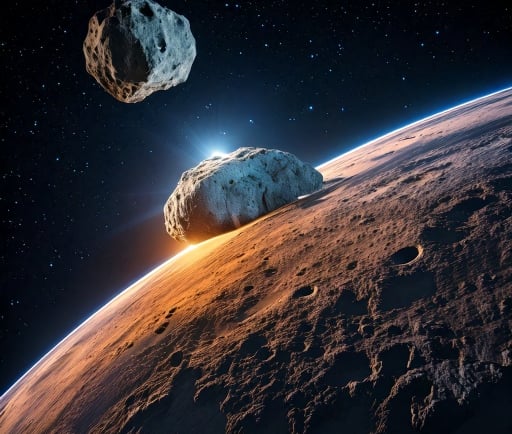Understanding the Risks of Near-Earth Asteroid Apophis: What to Expect in 2029


An Introduction to Near-Earth Asteroids
Near-Earth asteroids (NEAs) are a category of celestial bodies that orbit the sun and come close to Earth’s orbit. Among these, the asteroid known as Apophis has garnered significant attention due to its predicted close encounter with our planet. With its next approach slated for April 13, 2029, understanding the characteristics and potential risks associated with this asteroid is crucial.
What Makes Apophis a Hazardous Asteroid?
Discovered in 2004, Apophis is classified as a potentially hazardous asteroid primarily because of its size and its close trajectory to Earth. Measuring approximately 1,100 feet across, it poses a significant threat should it collide with our planet. Although initial calculations suggested a potential impact with Earth in 2029, recent assessments indicated that it will pass within about 20,000 miles of the Earth's surface, which is considerably closer than many satellites orbiting our planet.
Observational Efforts and Future Tracking
Asteroid Apophis presents a unique opportunity for scientific observation. As it approaches Earth, astronomers and space agencies around the globe plan to undertake extensive observational campaigns. Utilizing various telescopes, researchers aim to gather data on its size, composition, and trajectory, which can further assist in understanding the dynamics of similar bodies. Beyond the 2029 close encounter, Apophis will return for additional approaches in subsequent decades, providing continued opportunities for study.
The threat posed by near-Earth asteroids in general cannot be overstated. Continuous monitoring and enhanced tracking systems are essential to assess the risks accurately. While Apophis's close pass in 2029 is remarkable and does not pose an immediate threat of collision, it emphasizes the importance of planetary defense strategies.
In conclusion, near-Earth asteroid Apophis is a compelling subject of study as it approaches our planet on April 13, 2029. By understanding the characteristics and movements of such celestial bodies, we can better prepare for the future and enhance our knowledge in the field of planetary science.
